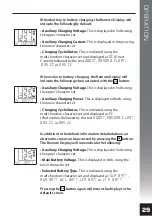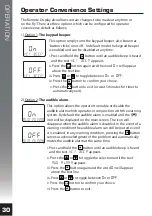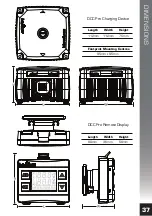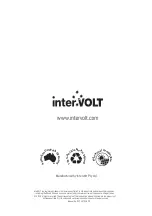
In order to prevent further damage due to overcharging, the DCC Pro is
programmed for the safest option which is to reduce the Voltage by switching
out of constant current mode into float stage. There is also the possibility that a
heavy load permanently connected to the auxiliary battery is responsible for the
charging cycle to time out in boost/CC stage before terminal Voltage is achieved.
If this is the case the DCC will continue to monitor the Voltage and if the Voltage
drops below 12.0V again (during the two minute check period), the boost/CC
stage will re-initiate and the whole process will start over.
Absorption/CV:
The absorption/CV stage, the next step in the charging cycle,
is initialised when the boost/CC stage is completed. In absorption/CV stage the
charger is operating in Constant Voltage (CV) mode and is also time limited. The
time is calculated from the boost/CC cycle and is based on a maximum of four
times the actual boost/CC time (subject to the battery type selected). As with the
boost/CC stage the current is limited to 25 Amps. The absorption/CV stage is
completed or terminated under the following conditions:
•
the programmed time cycle has finished
(pre-determined by the battery type selected) ; or
•
the charge current is reduced below 4 Amps
(approximately 15% of maximum charge current).
Float/CV:
The final process in the charging cycle is the float stage. In float stage
the charger is operating in Constant Voltage (CV) mode. The float Voltage is
determined by the battery type selected in the initial set-up phase. The float
stage is programmed to maintain and monitor the battery indefinitely and as
such, allows the auxiliary battery to be connected permanently without any risk
of overcharging. As with the boost/CC and absorption/CV stage the current is
limited to 25 Amps.
It is important to note that solar power can only be utilised if it is required.
In other words, if the batteries are fully charged and there is no load on the
auxiliary battery, the power is therefore unusable. Accordingly the charging
power displayed on the Remote Display may read zero Watts so do not be
alarmed to see this result under these conditions. The solar charging method
operates in two different ways depending on the control mode selected - Voltage
or ignition. These charging control modes are explained on page 7.
APPENDIX
40

















